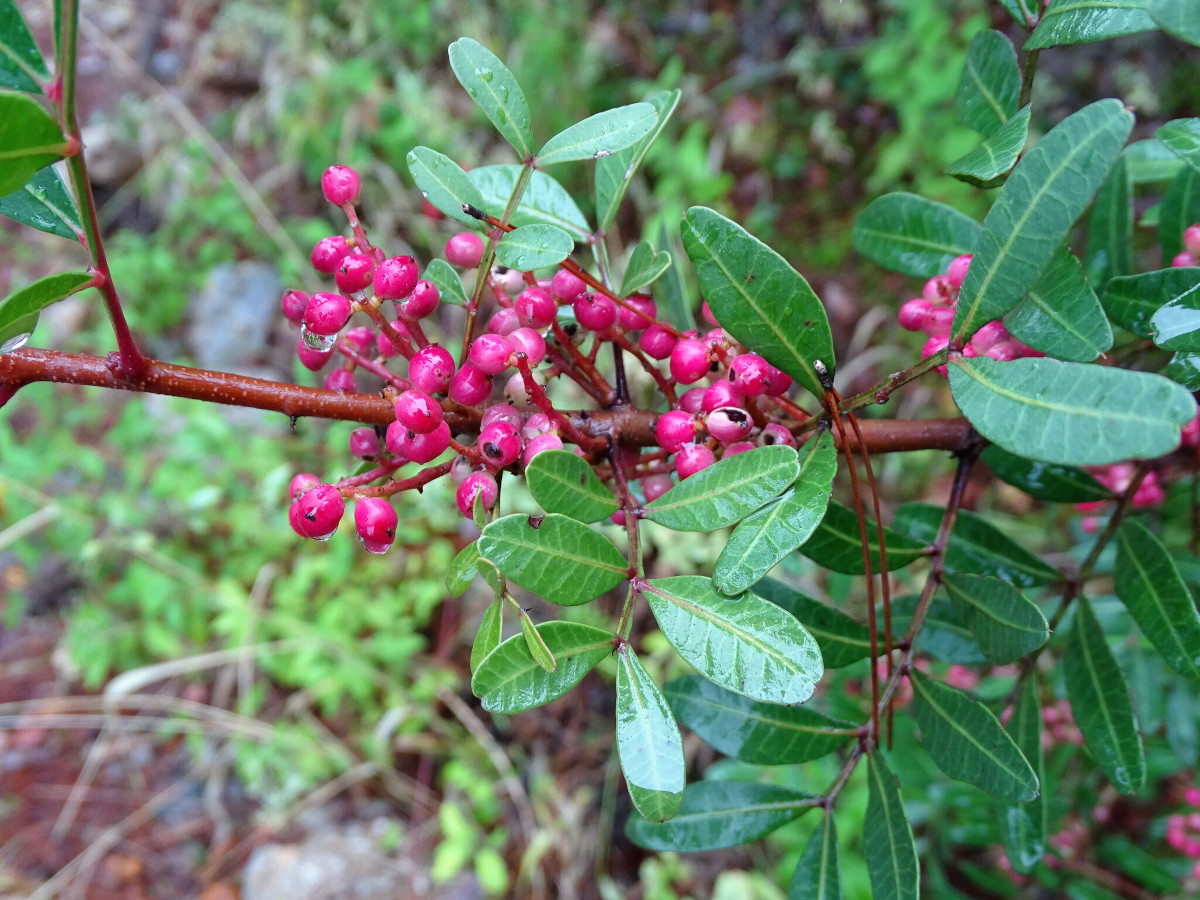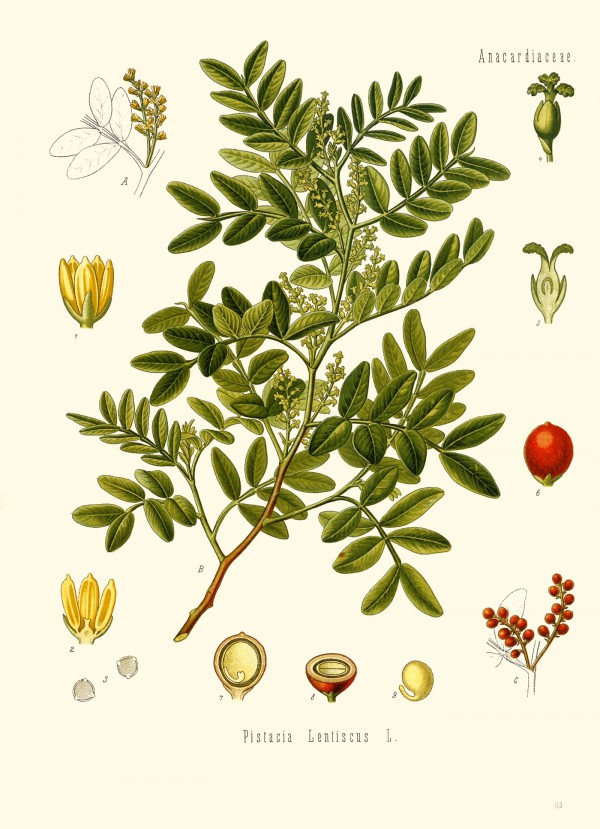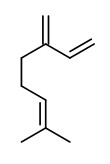Pistacia lentiscus L. - Anacardiaceae - lentisco (span.), lentiscus, mastic, lentisque (fr.), Mastixstrauch, Mastixbaum, Mastix-Pistazie
Evergreen dioecious shrub or tree, up to 3m high, native to the Mediterranean, Middle East, Persia, Central Asia, cultivated for its aromatic resin (greek island Chios).
„The aromatic, ivory-coloured resin, also known as mastic [also called 'Arabic gum', 'Yemen gum', 'tears of Chios'], is harvested as a spice from the cultivated mastic trees grown in the south of the Greek island of Chios in the Aegean Sea, where it is also known by the name „Chios tears“. Originally liquid, it is hardened, when the weather turns cold, into drops or patties of hard, brittle, translucent resin. When chewed, the resin softens and becomes a bright white and opaque gum.“ http://en.wikipedia.org/wiki/Pistacia_lentiscus
Mastic is used in varnishes, perfumes, cosmetics, and as an essential ingredient of chrism. wikipedia
„The chemical composition of the essential oils isolated by extraction of mastic gum and by hydrodistillation from leaves, and unripe and ripe fruits of Pistacia lentiscus L. was studied. Up to 250 constituents were detected in the oils. From these components, about 90 could be identified and quantified, comprising over 95% of the oils. The gum oil contained 90% monoterpene hydrocarbons, and the leaf oil 50% monoterpene hydrocarbons, 20% oxygen-containing monoterpenes and 25% sesquiterpenes, whereas the fruit oils consisted of 90-96% monoterpene hydrocarbons and 2-3% sesquiterpenes. The main constituents of the gum oil were: 79% α-pinene and 3% β-myrcene; of the leaf oil: 11% α-pinene and 19% β-myrcene; of the unripe-fruit oil: 22% α-pinene and 54% β-myrcene, and of the ripe-fruit oil: 11% α-pinene and 72% β-myrcene. α-Terpineol and terpinen-4-ol (together 15%) were the dominant monoterpene alcohols in the leaf oil.“
Undecan-2-one (0.1-0.6%) with its 'waxy fatty pineapple' scent seems to be an olfactively important constituent of the oils.
[Chemical composition of the essential oils from the gum and from various parts of Pistacia lentiscus L.(mastic gum tree)., Boelens, M. H., Jimenez, R., Flavour and fragrance journal, Vol.6(4), 1991, 271-275]
The essential oils of fresh leaves of P.lentiscus was found to be rich in α-terpineol (13.0%), ethyl hexadecanoate (10.3%), and ethyl linolenate (11.3%), main components of the essential oil of the semi-ripe fruits were terpinen-4-ol (13.0%) and α-terpineol (13.6%).
[Fleisher, Z., Fleisher, A. (1992). Volatiles of the Mastic tree - Pistacia lentiscus L. Aromatic plants of the holy land and the Sinai. Part X. Journal of Essential Oil Research, 4(6), 663-66]
„The essential oil and gum of Pistacia lentiscus var. chia, commonly known as the mastic tree, are natural antimicrobial agents that have found extensive uses in medicine in recent years. α-Pinene, β-myrcene, β-pinene, limonene, and β-caryophyllene were found to be the major components.“
[Chemical composition and antibacterial activity of the essential oil and the gum of Pistacia lentiscus Var. chia., Koutsoudaki, C., Krsek, M., Rodger, A., Journal of agricultural and food chemistry, Vol.53(20), 2005, 7681-7685]
„Essential oil (EO) from aerial parts (leaves, juvenile branches, and flowers when present) of Pistacia lentiscus L. growing wild in five localities of Sardinia (Italy) was extracted by steam-distillation (SD) and analyzed by gas chromatography (GC), FID, and GC-ion trap mass spectrometry (ITMS). Samples of P. lentiscus L. were harvested between April and October to study the seasonal chemical variability of the EO. A total of 45 compounds accounting for 97.5-98.4% of the total EO were identified, and the major compounds were α-pinene (14.8-22.6%), β-myrcene (1-19.4%), p-cymene (1.6-16.2%), and terpinen-4-ol (14.2-28.3%). The yields of EO (v/dry w) ranged between 0.09 and 0.32%. Similar content of the major compounds was found in samples from different origins and seasonal variability was also observed.“
[Characterization of the volatile constituents in the essential oil of Pistacia lentiscus L. from different origins and its antifungal and antioxidant activity., Barra, A., Coroneo, V., Dessi, S., Cabras, P., Angioni, A., Journal of agricultural and food chemistry, Vol.55(17), 2007, 7093-7098]
Mastic gum essential oil (1-3% of the gum) contained α-pinene 59.2-87.1% and myrcene 4.7-27.6%. Chiral GC-MS analysis showed (-)/(+)-α-pinene ratio from 0.55:100 to 1:100 and (-)-α-pinene/myrcene ratio from 1.9:100 to 11:100.
[Quality profile determination of Chios mastic gum essential oil and detection of adulteration in mastic oil products with the application of chiral and non-chiral GC-MS analysis., Paraschos, S., Magiatis, P., Gikas, E., Smyrnioudis, I., Skaltsounis, A.L., Fitoterapia, 114, 2016, 12-17]

Pistacia lentiscus, Grecja Środkowa, Greece (2025) © Grzegorz Grzejszczak CC BY-SA 4.0 inaturalist.org

Köhler, F.E., Medizinal Pflanzen, vol.2 t.130 (1890) plantgenera.org
Pictures of Pistacia lentiscus var. chia from the Greek island of Chios: www.guenther-blaich.de




